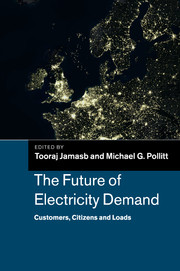Book contents
- Frontmatter
- Contents
- List of Figures
- List of Tables
- List of Boxes
- List of Contributors
- Foreword
- Preface
- Acknowledgements
- Introduction and overview of the chapters
- Part I The economics
- Part II Technology
- Part III Social dimensions
- 9 From citizen to consumer: energy policy and public attitudes in the UK
- 10 The local dimension of energy
- 11 Centralization, decentralization and the scales in between: what role might they play in the UK energy system?
- 12 Equity, fuel poverty and demand (maintaining affordability with sustainability and security of supply)
- 13 Energy spending and vulnerable households
- Part IV Policy and regulation
- Index
- References
11 - Centralization, decentralization and the scales in between: what role might they play in the UK energy system?
from Part III - Social dimensions
Published online by Cambridge University Press: 05 March 2014
- Frontmatter
- Contents
- List of Figures
- List of Tables
- List of Boxes
- List of Contributors
- Foreword
- Preface
- Acknowledgements
- Introduction and overview of the chapters
- Part I The economics
- Part II Technology
- Part III Social dimensions
- 9 From citizen to consumer: energy policy and public attitudes in the UK
- 10 The local dimension of energy
- 11 Centralization, decentralization and the scales in between: what role might they play in the UK energy system?
- 12 Equity, fuel poverty and demand (maintaining affordability with sustainability and security of supply)
- 13 Energy spending and vulnerable households
- Part IV Policy and regulation
- Index
- References
Summary
Introduction
The scale of future energy systems in the UK will have a significant impact on the evolution of the built environment. Yet, the scale at which energy systems emerge is closely connected with social and economic values and behaviours and the nature of governance at local and national levels. Today's centralized energy system has a particular relationship with the built environment through the way people understand and use energy services. Electricity is centrally generated in remote power plants; the majority of heating systems are fuelled by gas which is centrally distributed; and petrol for vehicles is refined and distributed through a few large depots. Electricity generation within the built environment is rare, while district heating networks are virtually absent.
A key issue for decision makers is whether the strongly centralized approach to energy provision that developed in the post-war period can continue to meet the needs of the economy and society over the coming decades. The current pattern of mainly large-scale power plants and centralized delivery infrastructures for electricity, gas and oil may be sufficiently flexible to meet the dual challenges of energy security and climate change, but this is by no means certain. Meeting these challenges could require a significant shift so that energy systems are located at a range of scales. Indeed, some government strategies such as those to increase the role of renewables imply that such a shift needs to start soon.
- Type
- Chapter
- Information
- The Future of Electricity DemandCustomers, Citizens and Loads, pp. 280 - 297Publisher: Cambridge University PressPrint publication year: 2011
References
- 6
- Cited by



